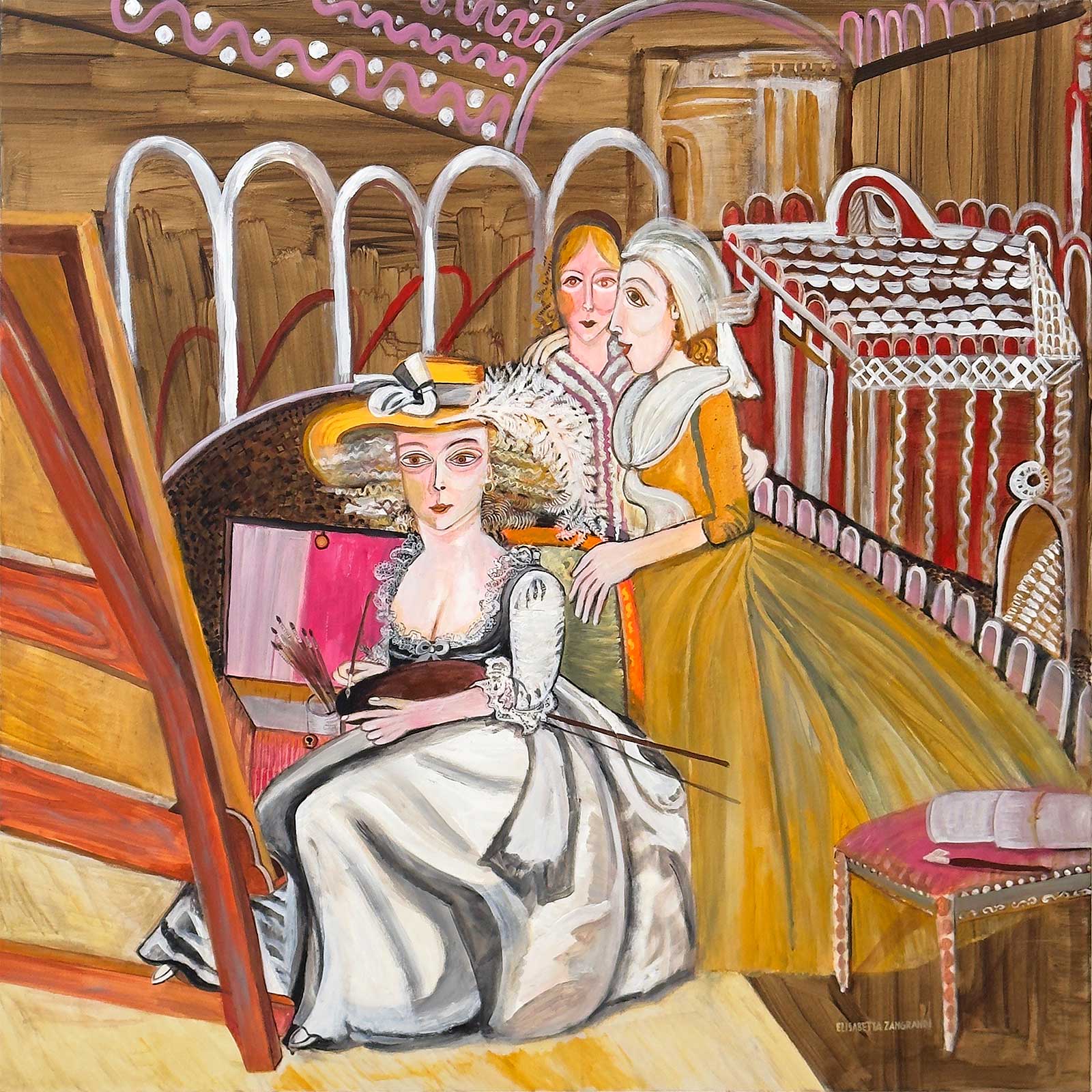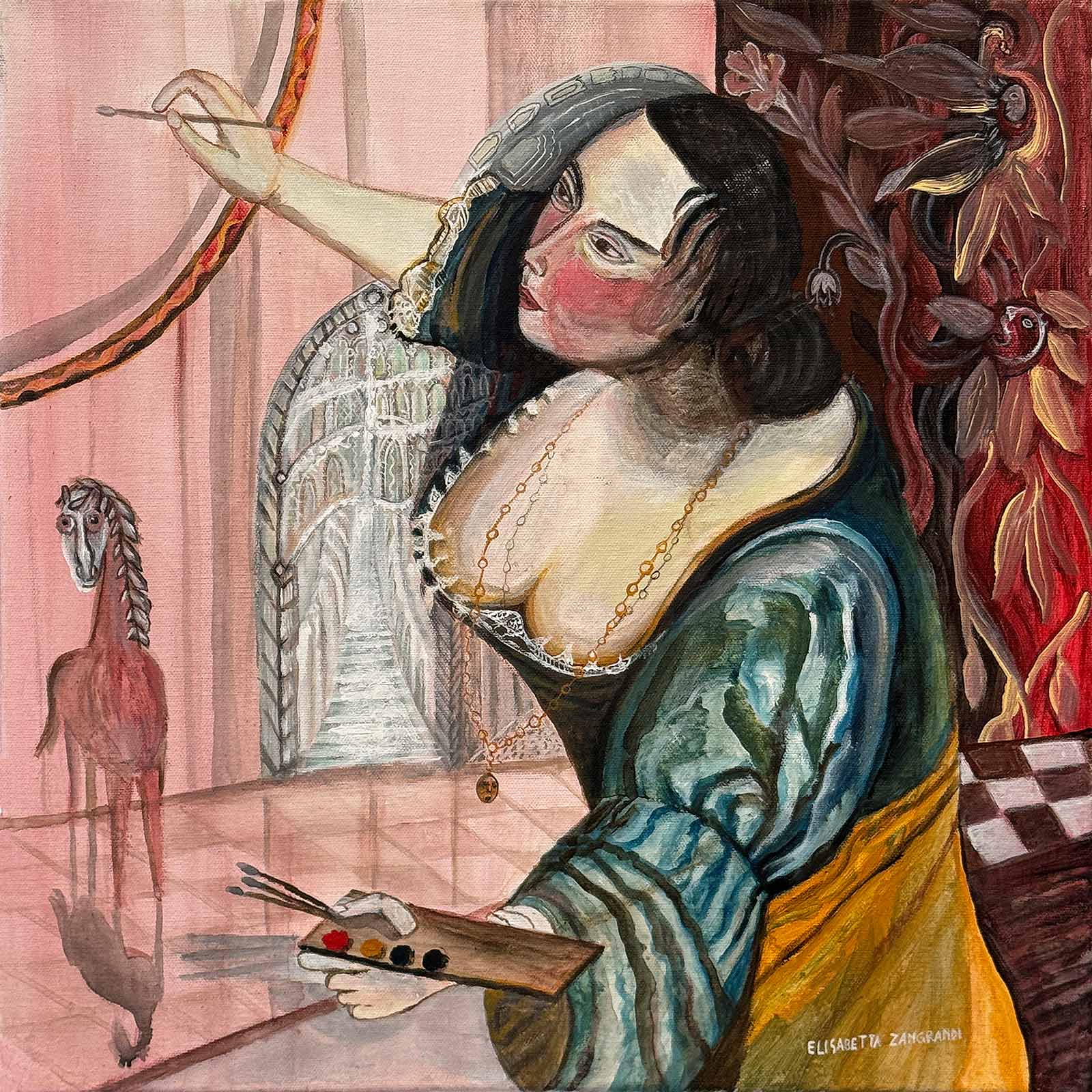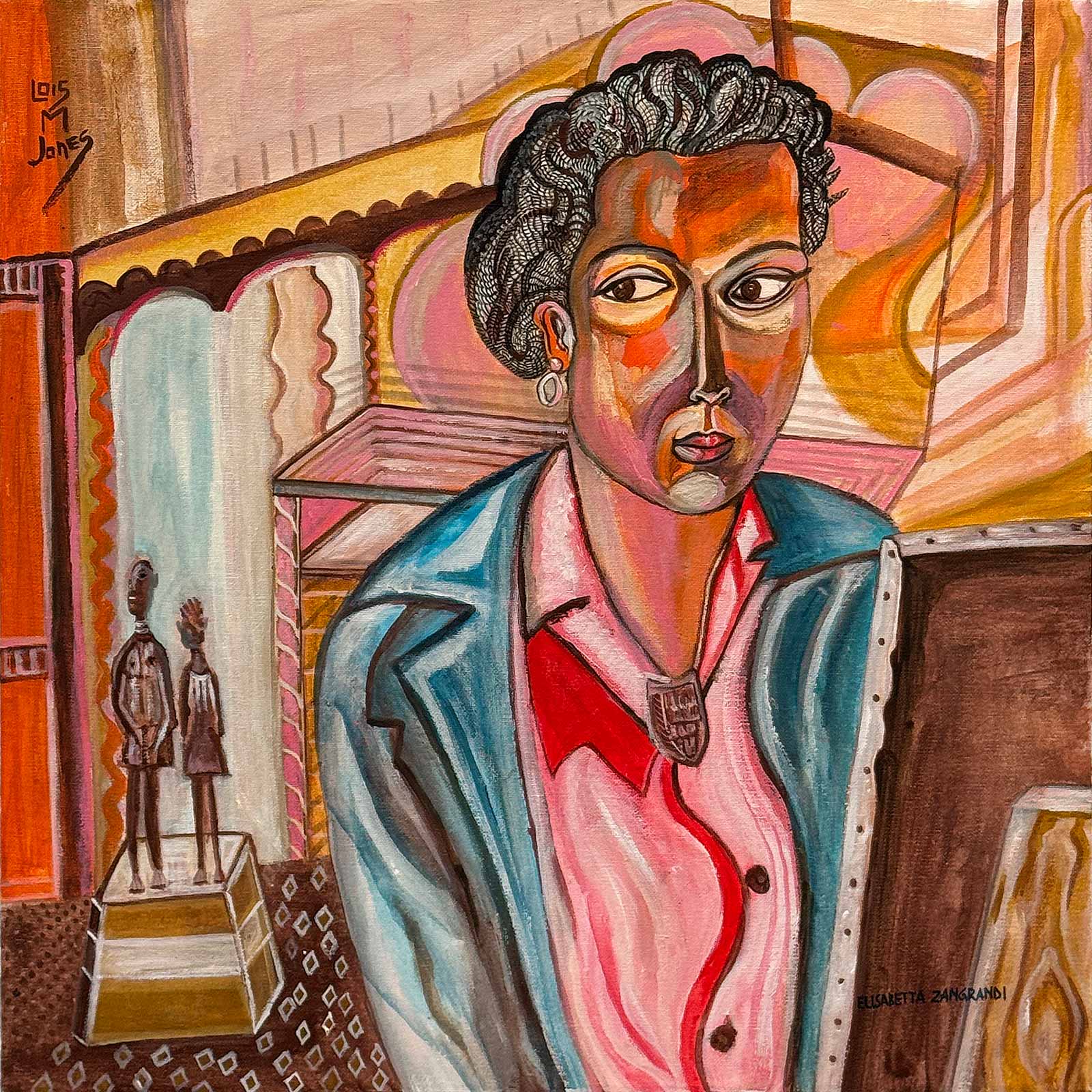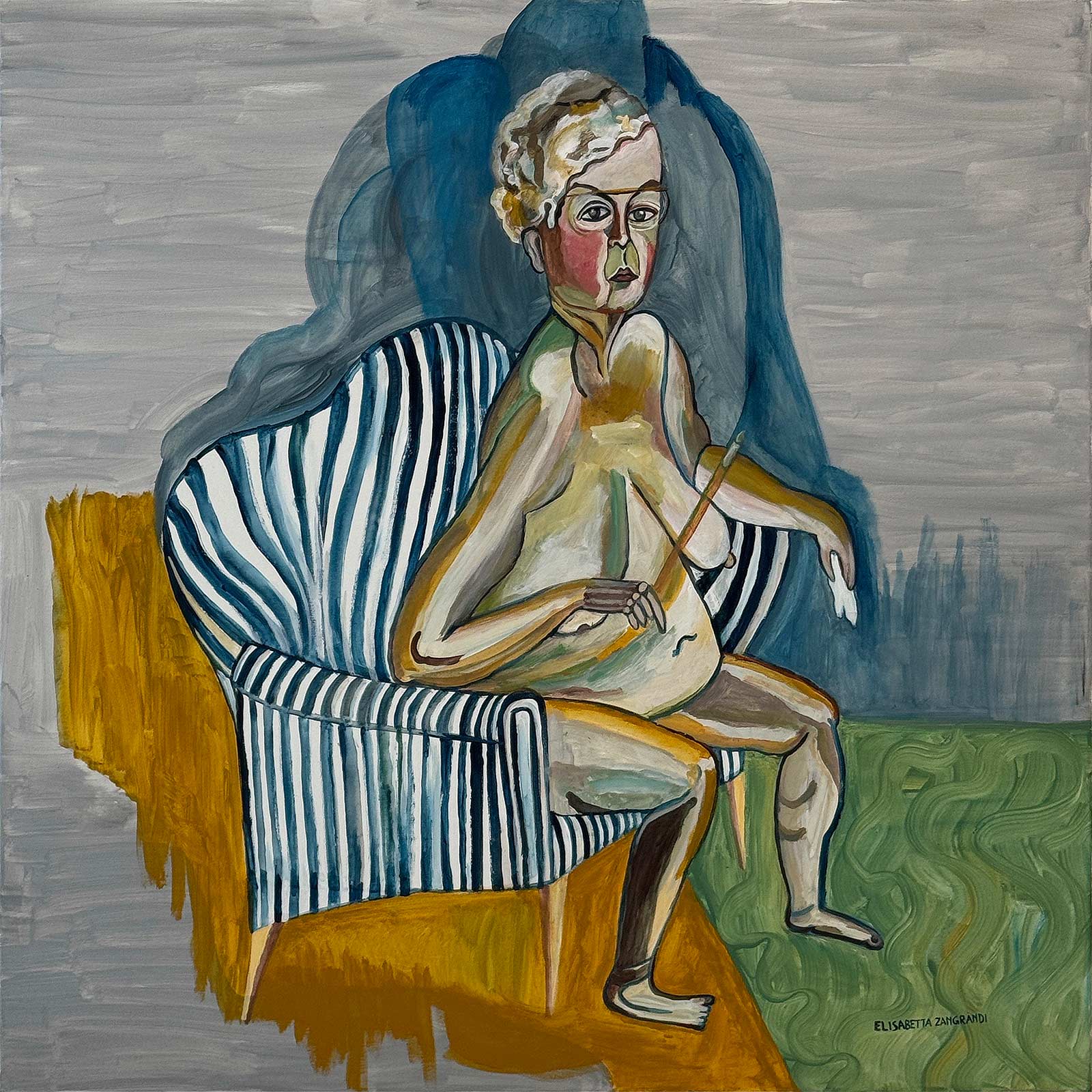The Italian painter’s latest solo exhibition ‘Musée Imaginaire’ looks to past generations of women artists to stage a new present
“Why Have There Been No Great Women Artists?” asked American art historian Linda Nochlin in a 1971 essay, titled the same. Fifty-some years later, this question—and Nochlin’s seminal text, which examined, from a feminist lens, the myriad obstacles that prevent women from succeeding in the arts—continues to reverberate. Invoked frequently in conversations about the institutional barriers facing women in the arts, the essay was described by Eleanor Munro as “epochal” for its influence. It is credited for catalyzing the rediscovery of women artists previously elided from history, and served as an impetus behind Women Artists: 1550-1950, the first international exhibition showcasing the contributions of women in an art-historical canon dominated by men. This effect ripples outward today with exhibitions like Italian artist Elisabetta Zangrandi’s Musée Imaginaire, a series of portraits that address communal labor, struggle, and creativity as reflected by generations of women artists before her.
Curated by Alison M. Gingeras and on view May 11–June 26 at Keyes Art in Sag Harbor, the exhibition centers on Zangrandi’s figurative reinterpretation of the artistic forerunners that inspired her, from the 12th-century German monastic Guda of the Weissfauen Convent, creator of the earliest signed self-portrait by a woman in Western Europe, to 20th-century iconoclasts like Alice Neel and Frida Kahlo. Across 15 canvases, Zangradi’s acrylic portraits—which she began creating at Gingeras’s urging after the two struck up a correspondence over Instagram DM—reference the original paintings on which they’re based, re-staging the works in her own whimsical style. By bringing different generations of women artists into dialogue in her own musée imaginaire—translated in English as “imaginary museum”—Zangradi creates her own personal canon of artistic inspiration, simultaneously honoring her predecessors and claiming her place within the same historic lineage.
Camille Sojit Pejcha: Tell me about the dialogue between you and exhibition curator Alison Gingeras leading up to the exhibition.
Elisabetta Zangrandi: The project was born out of a message I received from Alison: ‘Would you consider repainting the artist-women’s self-portraits from the past?’ I said ‘Yes, I would love it!’
Alison then sent me a chronological index of all the known female artists’ self-portraits across time. Some of them were utterly unknown to me, but Alison guided me as I chose the ones I wanted to focus on. I immediately accepted the original proposal to repaint these historical works. Conceptually, I made every portrait in my own language by analyzing each work with humility.
Camille: Your portraits represent not just iconic works by women artists, but one in which they are physically present.
Elisabetta: It’s true, the artists are physically present! And it was an act of awareness: ‘I’m here, I’m an artist, my will is not in question.’
Camille: Can you speak a little to the gendered dynamics surrounding women artists and self-portraiture?
Elisabetta: Portraiture was a great opportunity that these artist-women seized upon, especially during particular historical periods. It was a well-paid activity that allowed for economic independence. Rather than live in hardship, why not make such paintings in your spare time?
Camille: How do you feel the significance of staging the artist within the work has changed in the technologically-mediated world in which “selfies” are normalized?
Elisabetta: I don’t like taking selfies. I don’t recognize myself when I see myself in photos. Sometimes I smile when I see certain curled lips and a three-quarter profile too close to the camera.
I find that when the artist works using a mirror, looking at her own reflected image and looking inside herself, it is that ‘mise-en-scène’ of the act of working that gives fullness to the genre. In my opinion, the gaze that is recorded in a painting is significant; a photographic selfie is just an image but not the real deep self-reflection one finds in a self-portrait painting.
Camille: What are some “easter eggs”—elements of the paintings, or even of the lives of the women being depicted—that might not be immediately evident to the viewer?
Elisabetta: Surprises, yes! The nun Guda was a beautiful discovery: She made a tiny portrait of herself inside a capital letter in an illuminated manuscript and surrounded it with a Latin inscription: ‘Guda peccatrix mulier, scripsit et pinxit hunc librum’ (‘Guda, a sinful woman, wrote and painted this book’).
In about 1150, she put her name first of all: Guda. Then the declaration that she is a sinful woman, then declaring her acts of writing and painting sinful—but declaring them nonetheless. I send her all my admiration. Well done, Guda!
I believe that [Paula] Modersohn-Becker’s poignant writing requires a careful look. I read her ‘de profundis’ memoir for the first time after Alison’s suggestion. She suggested dedicating my entire body of work to her and I was in perfect agreement.
“My way of thinking about my work has not changed; I would say I do it instinctively, even though I am aware that ‘intuitive’ is not a popular adjective today for describing the act of painting”
Camille: How did these specific artists—their work as well as the way they were treated historically and now in the present—inform your way of thinking about your own work?
Elisabetta: I could talk for hours about each artist. Each one is here forever, each with their own life, and some have suffered physically. I of course am thinking about Frida [Kahlo] and the torture of her body. She was beautiful and so in pain but determined to leave an indelible mark.
My way of thinking about my work has not changed; I would say I do it instinctively, even though I am aware that ‘intuitive’ is not a popular adjective today for describing the act of painting. But for me it truly is like that, as intuitive as suckling is for a newborn.
I felt such strong satisfaction when looking at each finished painting; when Alison responded enthusiastically to the images I sent her, this was another jolt of adrenaline. To be honest, I feel that I haven’t yet exhausted the possibilities for this body of work. I would like to pay homage to many other artists, and I hope to continue collaborating on the project with the infinitely great Alison. To her I want to say, ‘You made me grow, I’m grateful.’



























